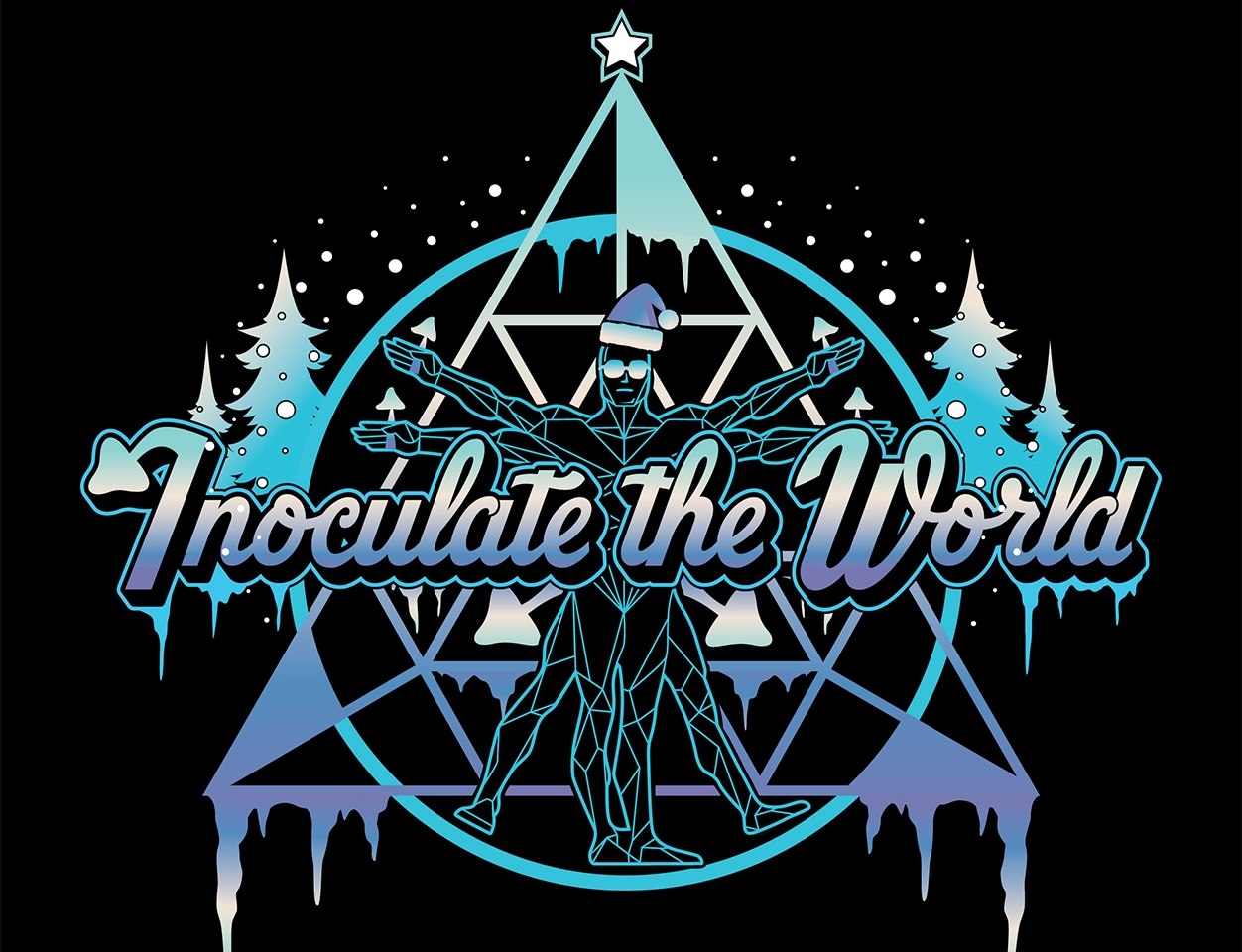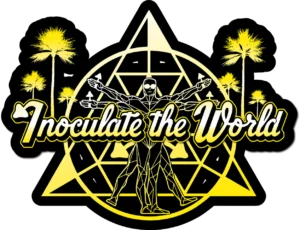Mushroom Spores
Everything You Need To Know About Mushroom Spores
Despite their size, mushroom spores bring vast swaths of land to life, from the forest floor to the grazing pasture. While it’s easy to recognize the plants and animals around us, the decomposers–the microorganisms and fungi that make up so much of our world–often go unnoticed. Decomposers consume and recycle waste like dead wood and dung, making the nutrients accessible and again to plants, and eventually animals in the ecosystem. Underground mycelial networks work symbiotically with tree roots to help plants intake nutrients. What starts as a tiny spore becomes a key player for an entire ecosystem.
What are Mushroom Spores?
Mushroom spores are comparable to the seeds of a plant. The word ‘spore’ even comes from the Greek word sporā, which means seed, but there are key differences between spores and seeds. Spores are the microscopic, single-celled organisms that mushrooms produce and disperse. Plant seeds, on the other hand, are typically visible to the naked eye. Additionally, plant seeds contain all the genetic information needed to grow an entirely new plant, whereas mushroom spores only contain half the necessary material to birth a new mushroom. 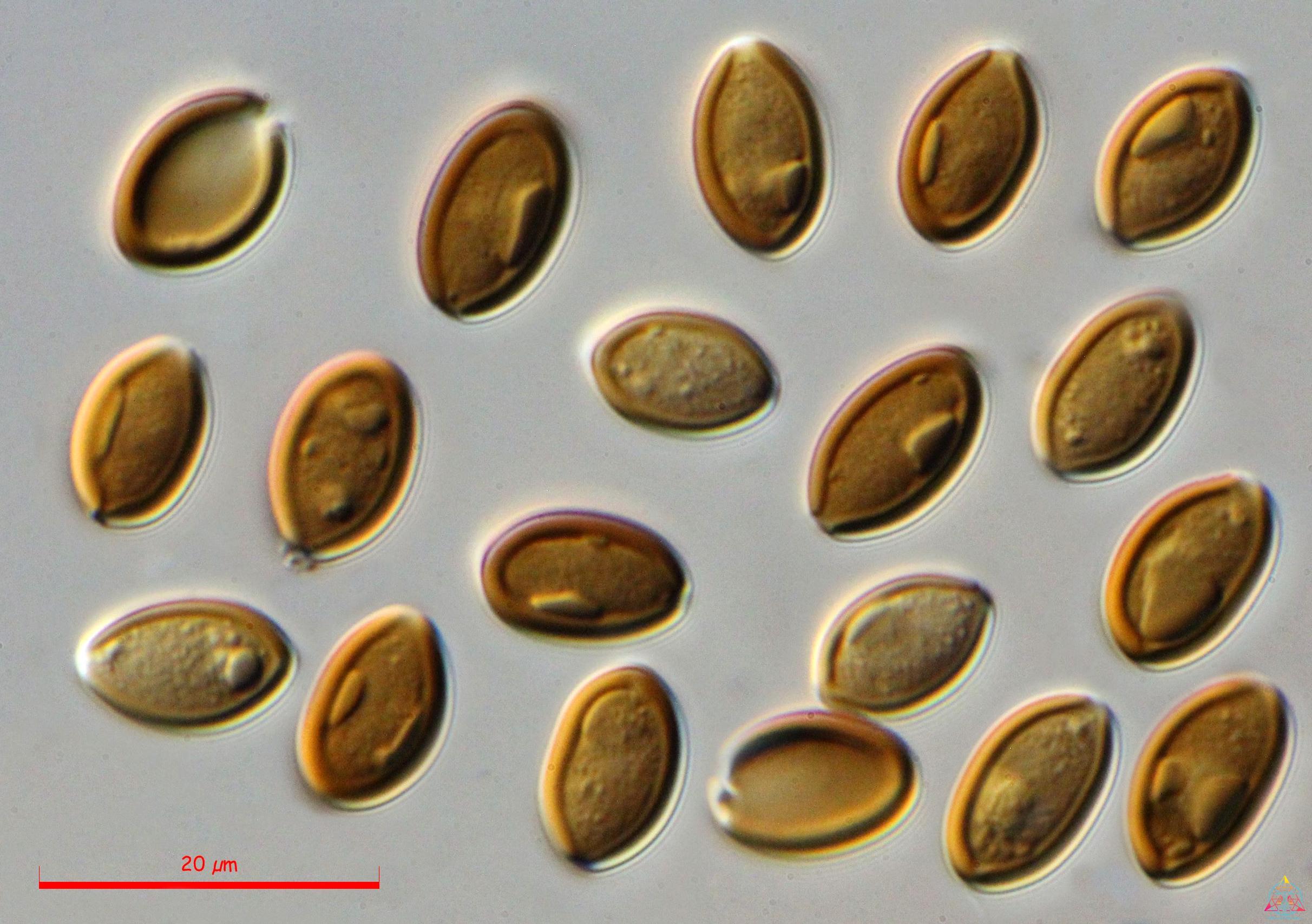
The fruiting body of a mushroom produces thousands of spores which drop from its gills, falling to the ground, or blowing away. Under the right conditions, such as decaying plant matter, a spore will send out tiny branches of growth called hyphae in search of more nutrients. As it digests more nutrients in its path, it turns this material into more growth. Hyphae grow outwards from a spore forming a fuzzy, vegetative structure. This hyphae from a single spore only have half of the genetic material it needs to complete its life cycle. Once two compatible hyphae meet in their environment, they fuse together to form mycelium and produce a mushroom.
The actual fruiting bodies can vary greatly, but species like Amanita Muscaria, represent the most common mushroom morphology. Amanita Muscaria has the iconic umbrella-like shape that most people picture when they think of a mushroom. While Amanita has special features like its classic red hue with white spots, it deposits spores just like most other mushrooms: through the gills on the underside of the cap. Though this anatomy is the most common, fruiting bodies can have countless other unique expressions, such as the otherworldly antlers of species like Reishi Lingzhi.
What sets fungi apart from other life forms (kingdoms) is that even after two separate hyphae fuse, their nuclei stay separate. By the end of the life cycle when the mycelium form a mushroom of their own, they drop spores that reflect both genetic parents.
It’s this fascinating process that makes mushroom spores so special, and why we’ve dedicated our working lives to spreading the mycelial network far and wide with so many different varieties of spores.
History and Evolution of Mushroom Spores
The process of reproduction in fungi evolved separately from the other kingdoms, which is what makes the spore so unique. Spores are single-celled organisms with a solid cell wall, and even though their function is similar to seeds, they’re estimated to be at least 150 million years older.
Their cell walls are complex, consisting of polysaccharide structures including glucan, chitin and glycoproteins, which allow mushroom spores to survive extreme conditions. Due to these unique compounds,, spores are shockingly resilient to excessive heat, cold, salt and highly acidic or alkaline pH levels compared to other types of cells.
Still, there’s much more to be learned about the properties of spores and their cell walls. Although they all follow the same basic structure, they still vary in shape and size depending on the species, which opens up the possibility for further inquiry through microscopy. You can learn more about this research from our article: Spores: A How-To Guide
Where are Mushroom Spores Located?
Mushrooms are made up of so much more than just their visible features. The caps and stems of a mushroom are just the fruiting bodies of many species of fungi, and there’s much more going on under the surface. What lies deeper is the mushroom’s mycelium, the vast underground web-like system that collects food and nutrients for the whole of the fungus, and communicates with other fungal and plant-life through its network. 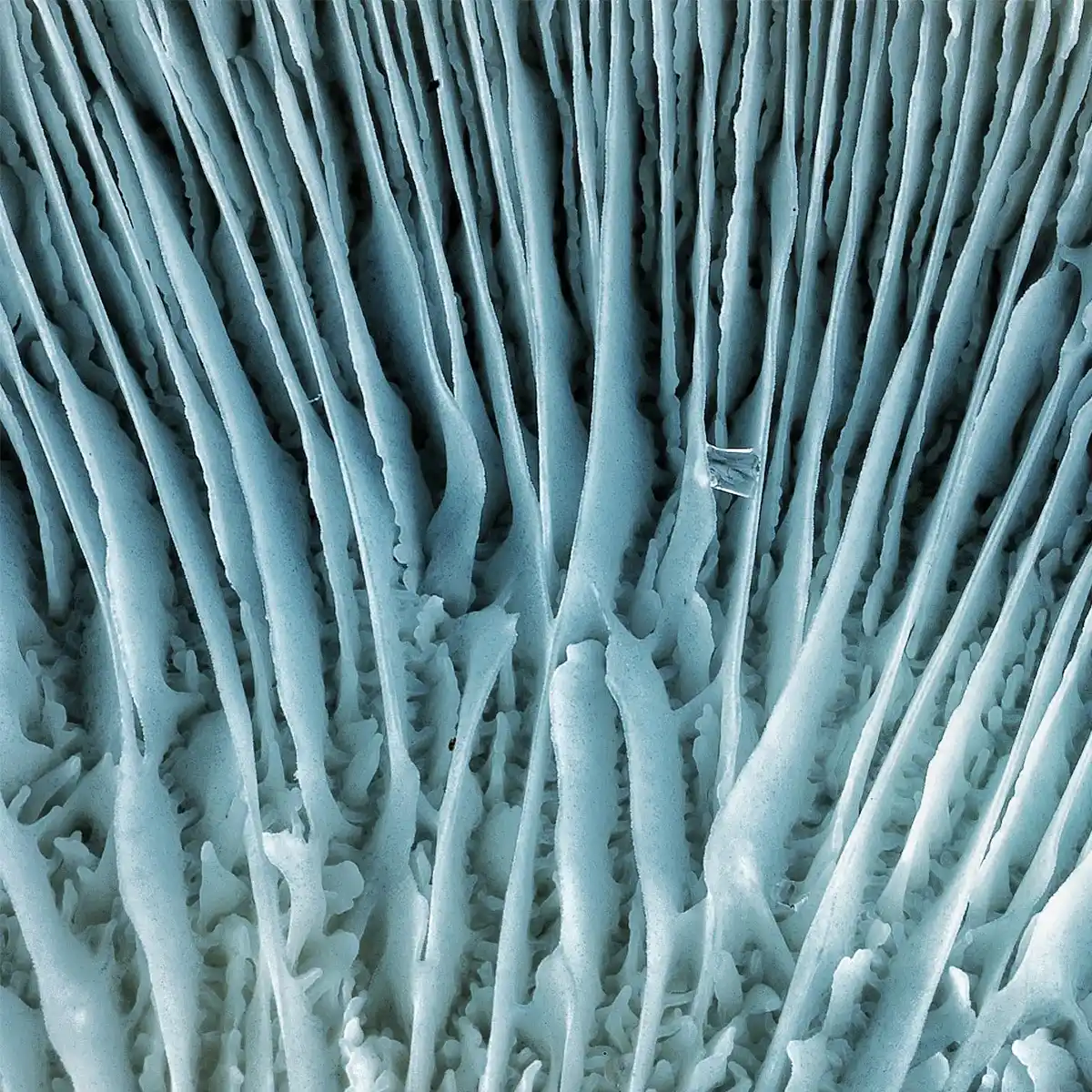
This brings us to our favorite part, mushroom spores, whose main function is to spread to new locations in search of food and a mate—ensuring the mushroom’s survival while also possibly creating new strains. These are born from spore-producing structures in the fruiting body called sporiferous hyphae, and their structure varies from species to species. On a species with a mushroom cap, like a typical Psilocybe cubensis, the spore-producing structures are the gills on the cap’s underside. Many of the world’s most popular and well-known mushrooms have gills, and you can think of the mushroom cap as the umbrella or shell that protects these delicate yet vital reproductive organs.
Of course, not all fruiting bodies have caps and stems. In mushrooms like Lion’s Mane, the spore- producing organs are teeth or needles, which release spores from small pores when the time is right. Other unique-looking mushrooms like chanterelles, morels and puffballs have their own unique ways to produce and spread spores.
How are mushroom spores spread?
Part of the beauty of mushroom spores is how they’re dispersed. Most often, they’re released into the air for something to carry them—wind, water, animals, even insects are great contenders. With a little luck, these flecks of dust in the wind will be blown toward a favorable habitat: decaying matter with the right temperature, humidity and UV levels, and other factors that play a major role in their chance of survival.
If conditions aren’t right, many mushroom spores can remain dormant and wait, sending out their thread-like hyphae when the mood is right and hopefully starting the whole process of reproduction all over again.
Different Forms of Mushroom Spores
Deciding which form of mushroom spore is right for you will depend on what kind of research you plan to do. There are many different options when it comes to the way the spores are stored. Below, we will go into each variant and note the differences between them.
One of the most common formats is mushroom spores suspended in sterilized water. This solution is made by scraping mushroom spores from a spore print into a sterile aqueous solution such as distilled water, then mixing thoroughly to ensure an even distribution of spores.
We fill vials with the spore solution and seal them tightly. Inoculate The World uses 12cc luer-lok sterile syringes with a removable sterile tip cap and a 1.5 inch 16 gauge needle. Our whole process is done in a sterile environment in front of a Laminar Flow Hood, and you can learn more about it in our article, Spores: A How-To Guide.
Isolated Syringes are stabilized mushroom genetics, optimized to be completely sterile and to provide the most robust mushroom genetics for your microscopy research. ‘Isolated syringe’ is a coin termed by Inoculate The World’s founder to describe our most stable strains.
Sometimes known as “Isolates” or simply “ISOs,” these curated varieties offer the most consistency for your research. Isolated Syringe genetics are extremely fast, hardy and resilient—that’s why they are one of our most popular magic mushroom spore products here at ITW.
SPORE PRINT
Remember when we explained how spores are dispersed—by dropping from the gills, pores or teeth of a fruiting body? Well, Spore Prints are created when you collect those spores in mass. For a gilled, cap and stem mushroom like most strains of cubensis, spore prints are created by cutting a mature mushroom cap from its stem, and placing it on a surface (here at ITW, we use sterile aluminum foil).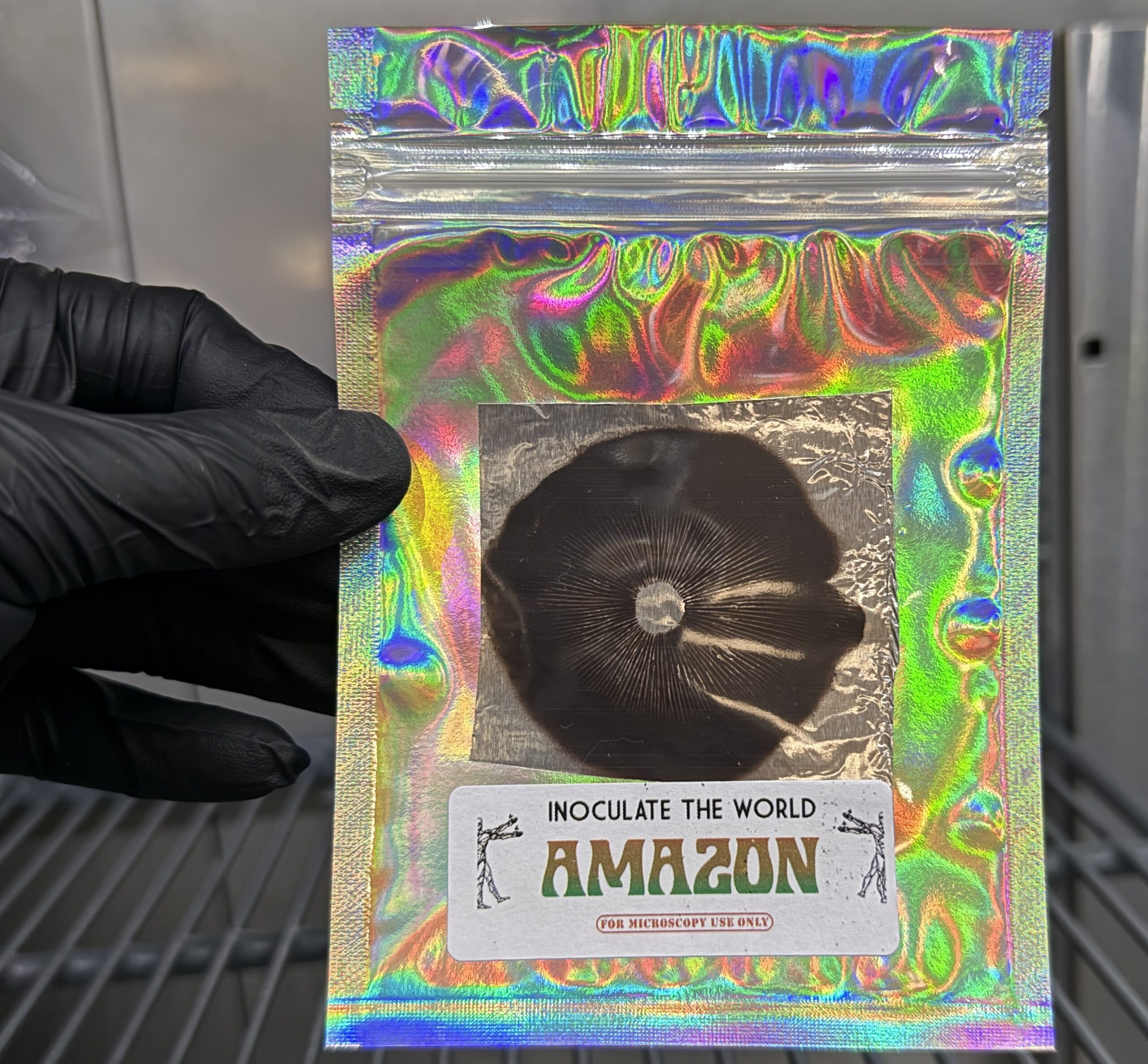
If you wait anywhere from a few minutes to 24 hours, that mushroom cap will release thousands of spores onto your surface, creating a spore print. Spore prints are super useful in identification of wild mushrooms because their color and other attributes can help distinguish from otherwise similar mushrooms.
Spore prints are also useful for microscopy and laboratory research. For microscopic viewing, simply use a tool to transfer the spores to a glass slide where they can be easily viewed under a microscope. Because spore prints are taken directly from mushroom caps, their size can vary, but they are all very useful to citizen scientists and mycologists alike.
SPORE SWAB
Some mushrooms do not produce a ton of spores, and with these strains and species collecting a spore print can be nearly impossible. That’s where Spore Swabs come in. Spore swabs are created by running a cotton swab on the upside of a mushroom’s gills, thus collecting some spores in the process. These spore swabs can then be used for microscopy and other types of laboratory research. Here at ITW, our spore swabs are created using medical-grade cotton tipped applicators to ensure their sterility and vigor.
How to Store Mushroom Spores
Once you get your mushroom spores, it is recommended to keep them sealed in their original packaging until you are ready to use them. Since InoculateTheWorld spores are packaged in a sterile environment, leaving the packaging closed until they are ready to be used is a good way to ensure the spores stay contamination free. 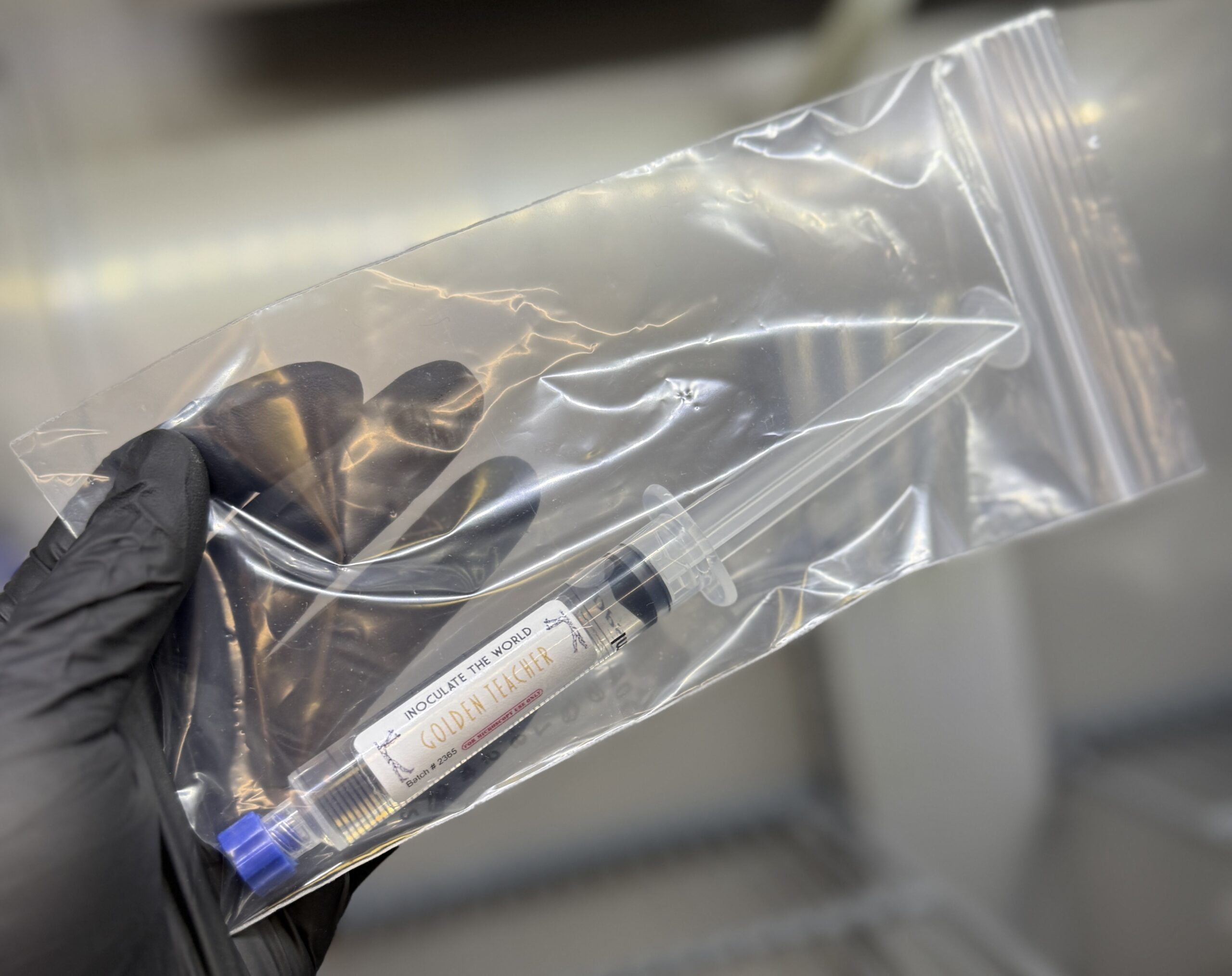
Then, the most important thing to remember is to keep mushroom spore syringes, prints, isolated syringes and other spore products in a cool, dry place, away from direct sunlight. To get the longest lifespan out of your spore syringes, seal them in a clean airtight container, like a vacuum sealed bag, mason jar, or airtight kitchen container to protect them from oxygen, moisture, and contamination.
If you’re planning on storing spores for a while, you may also want to place a desiccant packet in the container to ensure moisture levels stay low. You could also choose to refrigerate your spore syringes, isolated syringes and liquid cultures if you’ll be storing them for a while, but keep temps between 36-46°F (2-8°C), and never freeze them.
If stored correctly, most spore products can last for years. Liquid cultures and isolated syringes, on the other hand, should be used within 6 months of purchase to ensure they are as fresh and healthy as possible. With that said, we have seen properly stored isolated syringes still viable after 2 years. Read more about mushroom spore storage in our blog!
Why choose ITW mushroom spores?
Not only do we have the largest collection of psilocybin mushroom spores on the web, but we’re also a thoughtful, passionate family company, run by mushroom enthusiasts who want to spread mycelial knowledge throughout the planet. Or, in other words: Inoculate The World! Mushrooms have changed our lives for the better, and it gives us joy to wake up every morning and work on a project that brings them into the households of so many people across the US and beyond. Learn more about the creative, intentional people behind InoculateTheWorld on our Meet the Team page!
What also sets us apart is our commitment to quality control and customer support. We have a very rigorous QC process for all our mushroom spore products to ensure they never arrive on our customer’s doorsteps in less than optimal conditions. You can read all about it in our article: How Our Products Are Made.
We also don’t put anything on the site without knowing exactly where it came from. That means for all our Psilocybe cubensis mushroom spore strains, we can trace exactly where the original mushroom was foraged, and then who domesticated it and brought it to market. We even forage many of the new landrace strains and wild specimens ourselves, using our decades of training and experience.
Plus, we also know the importance of top-notch customer support, and work around the clock to always answer any question, issue or concern our customers might have. We are dedicated to providing a seamless checkout experience with fast and discreet shipping, so our community can feel secure with their purchase. Because we know choosing to investigate mushroom spores is a big and meaningful endeavor, we strive to put it within reach of anyone who’s curious.
Are Psilocybin Mushroom Spores Legal?
Yes! Because magic mushroom spores don’t contain any psilocybin—the active chemical compound that is a Schedule 1 substance in the United States—spore syringes are totally legal to possess, sell and use for microscopy and other research purposes. The DEA even recently made this clear in a January 2024 letter stating: “If the mushroom spores (or any other material) do not contain psilocybin or psilocin (or any other controlled substance or listed chemical), the material is considered not controlled [by the DEA].”
The full legal status of magic mushrooms has a complicated history in the United States. Magic mushrooms first became popular in the 1950s, but shifts in drug policy throughout the 60’s and 70’s made psychedelics illegal, laying the foundation for how things are today. However, recent advances in social justice, public policy, and neuroscience have opened the door for new legislation around the healing potential of magic mushrooms and mushroom spores. You can read more about these exciting changes in our article we wrote all about psilocybin legalization.
MORE ON MUSHROOM SPORES
If you’re interested in continuing your education on mushroom spores, check out our blog! We’re constantly coming up with new articles to educate our community on the fascinating world of mushrooms and their spores:
We also have an educational newsletter on all things mushroom spores! Sign up today for new releases, big discounts and a whole world of sporacious education. Don’t worry, we only send them out about once a week and we’ll never spam you with useless content.
DISCLAIMER: Spores are intended for legal microscopy and taxonomy purposes only. Pictures and information are for educational purposes, and originate from cultivators outside of the US. InoculateTheWorld.com does not sell mushrooms, we strictly sell mushroom spores. Cultivation of these species is illegal in many countries including the US, please follow all local laws and regulations.
